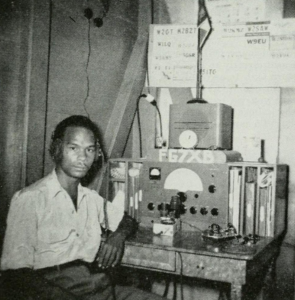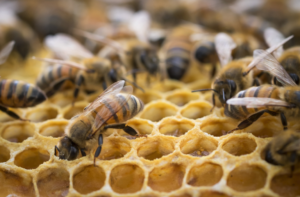A few days ago, a friend of mine wrote a series of tweets about Ways to Prepare. These were various broad things that people could do to prepare themselves for things such as the worst case Tr*mp Presidency scenarios (nuclear war), zombie apocalypses, and revolutions/civil wars. I went on to expound on things one could do to be prepared, whether one owns their own home or lives in an apartment.
At the prompting of a few friends, I’ve decided to compile the information in one place.
Communications: GET YOUR DAMN HAM RADIO LICENSE. Seriously. It costs $12 to take the test and you can build your own radio for as little as $10 (or buy a HT — Handy-talkie — for under $30). You can study online for free (ARRL and the FCC both have ALL the test questions and answers available). There are three levels of amateur radio licenses, none of which require Morse Code. They’re Tech, General, and Extra. Tech is your basic entry-level license. General gives you a much wider range of frequencies. Extra gives you privileges on every ham radio frequency. Tech is a good place to start; aim for General if you can. I’ve been a ham since 1999 and have my General Class license. I highly recommend The ARRL Ham Radio License Manual; it has every question you could see on the exam, the correct answers, and explanations so you understand why the particular question should be answered the way it is.
Amateur radio is a fantastic way of staying in contact when you don’t have power. With a 9v battery and a bit of wire, I can talk halfway around the world. That’s nothing to sneeze at! Almost every county in the country has an amateur radio club; I highly recommend taking a class if you can. In an emergency, ham radio is more reliable than land lines, cell phones, or just about any other form of communication. It may not be secure (far from it), but it is essential. So, I’ll say it again:
GET YOUR DAMN HAM RADIO LICENSE.
Learn some skills. No, not sweet nunchuck skills. I’m talking survival skills and skills for life. I put things like “learn how to make a fire without a lighter” in the survival skills category. I put “learn how to can foods” in the skills for life category.
Things you should/could learn how to do:
- basic hand sewing
- machine sewing
- clothing pattern construction
- spinning (you don’t need a spinning wheel! Drop spindles have been in use for millennia and take up almost no room!)
- weaving — you don’t need a big floor loom. You can use a table loom or even an inkle loom if you want to learn to make belts and straps. Card weaving is also a thing! This is a great book for Inkle weaving.
- backstrap weaving and fingerloop braiding.
- first aid/CPR (there are online courses, but this is best learned in-person. The Red Cross is usually your best bet.)
- tan and prepare hides
- construction (lots of youtube instructional videos out there)
- wattle and daub
- rain collection
- electronics knowledge (how to solder, build a solar cell, repair things, etc. Lots of tutorials on youtube)
- woodworking/basic carpentry
- learn what local flora is edible. You should be able to find a book that details what to look for. Learn how to pick these foods in the wild and how to prepare them. Local knowledge is key!
-
@starlightgeek oh on that note: know what plants can burn without releasing irritants.
turns out grapevines are great for smoking food over
— maco (@maco_nix) December 10, 2016
- How to shoot a rifle. (I’ll put this one into an optional category; not everyone will be comfortable with the idea of shooting a gun of any type nor will everyone have access to learn. However, if this is a thing you want to learn and have the resources to do, I recommend doing so. If you have zero experience with guns, go to a gun range and take a class.)
- Anything listed in the “Apartment-dweller’s list” below
Hard currency (paper money, coins) goes away during a true emergency. Liquor, food, and socks (yes, socks) are your best bet for trading — especially liquor. I had one person tweet me to share that after Hurricane Katrina, they traded their homebrew booze for gasoline. Alcohol will almost always be a great currency option. Now is a good time to learn to brew. I recommend starting with something straightforward, like mead. I made my first mead last year using a kit from the Bee Folks. They’ll sell you the honey and yeast kit and it comes with instructions. I’d start there before branching out into more complex meads, ciders, perries, wines, and beer.
Not everyone owns a home or lives in a rural area. I’ve spent most of my adult life feeling lucky if I could manage a bit of sun and a few herbs. Obviously, people with single family homes/land can do these, too, but I want to make sure folks in apartments have things they know they can do.
Some specific things apartment-dwellers can do/learn to do:
- learn to brew (as covered above)
- sewing/hand-sewing
- knitting (including learning to read knitting patterns)
- felting
- Read. Seriously. You can learn SO MUCH from reading. Own books that explain how to do things.
- candle-making
- soap-making (if you’re lucky enough to have a wood-burning fireplace, save your wood ash and your animal fats from cooking!)
- dyeing fabrics/yarn
- make your own cleaning supplies
- food preservation (canning, drying)
- learn to make paper from fiber scraps, whether used paper, scrap yarn, rags, whatever.
- If you have enough window/balcony space and cooperative pets, veggie/herb gardens can happen
- Naalbinding (loads of youtube videos, as well)
- Viking wire weaving (more decorative than practical, but easy to do by candlelight and inexpensive to get into)
- Whittling (always cut away from your body!)
- Quill-making
- Natural paint– and ink-making
- Navigation (celestial, terrestrial, and both with and without a compass)
- baking
- cooking
- wild yeast collection to make sourdough bread — and for brewing (there are DOZENS of variants for how to collect yeast; definitely search around!)
- making cheese
- fermenting foods (kimchi, sauerkraut, etc.)
- patching, darning, tatting. You’ll always need to be able to repair your clothes.
Here’s a thing to consider: if things go to hell and stay that way, it’s almost as important to be able to teach people these things as it is to produce things with them. You can absolutely trade/barter knowledge.
The “worst” case scenario is that you don’t end up needing the skills you’ve learned. But you are now less dependent on the world at large to make sure you can survive. You can pass those skills along, help to keep them alive. And you could help your local environment.
Hand-washing
I put up a series of tweets three years ago about how to hand-wash modern fabrics. I’m codifying them here for edification.
Wash each item individually. Use a big basin, though, and let your clothes soak. DON’T use modern detergents if you can avoid them (they’re designed for machines); use traditional detergents/soaps if you can. “Homemade” soaps do a much better job in these kinds of situations — and they’re very economical. I made a 5 gallon batch four years ago for about $15 and still have more than half my soap left.
Yeah.
Don’t use boiling hot water; warm (110-120F) is ample to loosen dirt. You will need to separate out colors and whites. Use similar colors (e.g. all blues and greens) in one basin rather than focusing on brightness/darks. And old-style corrugated washboard will do wonders. Barring that, though, a clean cookie sheet can help a lot by providing a firm surface to work the clothes over.
Do not wring your clothing. Repeat: DO NOT WRING OUT YOUR CLOTHES. Squeeze them, roll them up, but do not twist. Modern clothing is not made to the same standards as 50, 100, 300 years ago. Wringing out the clothing wills stretch and damage the fabric and seams.
You’ll need to wash until the water is filthy (gross, I know), and then rinse each item in clear, running water. When it’s time to get rid of excess water, FOLD the item of clothing over multiple times along the same line and squeeze that, starting at one end and working your way back to the other. This will get the majority of water out without damaging the fabric. If you do this, your fabric should only drip very slowly once it’s been hung up to dry.
Don’t pin shirts and similar at the shoulders; hang them either upside down or put it over the line so both sides hang down at once.
The sun is a natural deodorant and sanitizer.
The only exception to wringing out your clothes: jeans and towels. Feel free to wring the heck out of these. Jeans should never go in the dryer, by the way. Always let them drip dry.
Fabrics
I’m going to take a minute to talk about fabrics. Most of y’all know by now that I’m in the SCA. This is a GREAT way to learn ancient skills. On twitter today, I shared a small sampling of classes offered at Pennsic.
And if you want to learn traditional skills: the SCA knows what’s up.
Here are a handful of courses from last Pennsic. pic.twitter.com/6i4gGPN30H
— Yuletide Witch (@starlightgeek) December 10, 2016
The classes themselves rarely have any cost associated. If there is a fee, it’s for handouts or materials and the instructor makes no money; the fees only make them square to where they were before. Events cost a nominal fee. In the SCA, this information is shared for the love of learning and teaching. None of us want to lose these skills.
If shit ever hits the fan, you’ll probably want to learn about how to layer clothes. I strongly recommend sticking with natural products (linen, wool, down), barring allergies. Linen is strong, it wicks beautifully, dries quickly, and comes in a variety of weights. Wool is also strong, is warm even when wet, and is a fantastic insulator. Fur is unparalleled for warmth (especially the winter coats of cold-weather animals) and down can be wonderful, as well. Linen should be worn closest to the skin. During warm weather, an outer layer of linen can suffice. In colder weather, wool (often multiple layers) is recommended.
I hope this has been helpful.
Feel free to ask questions or make suggestions in the comments or to me on Twitter.


